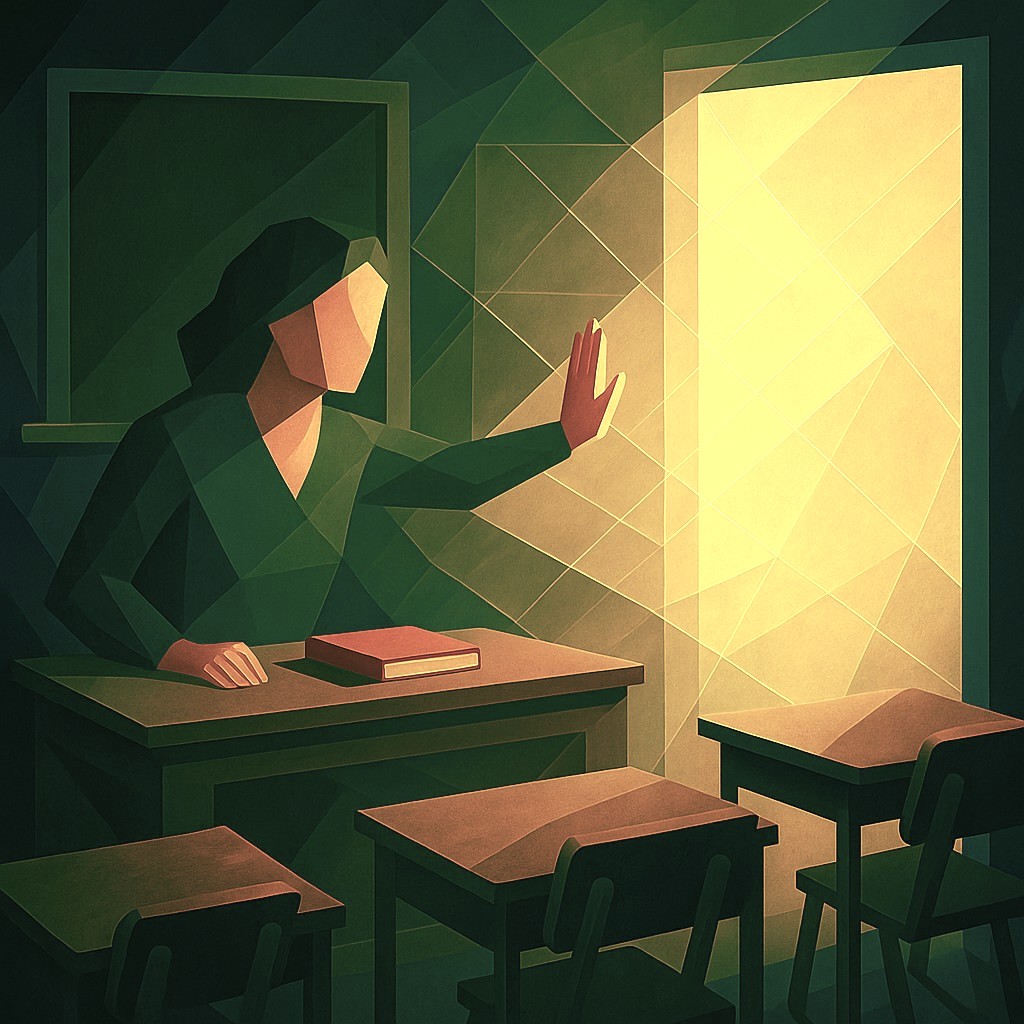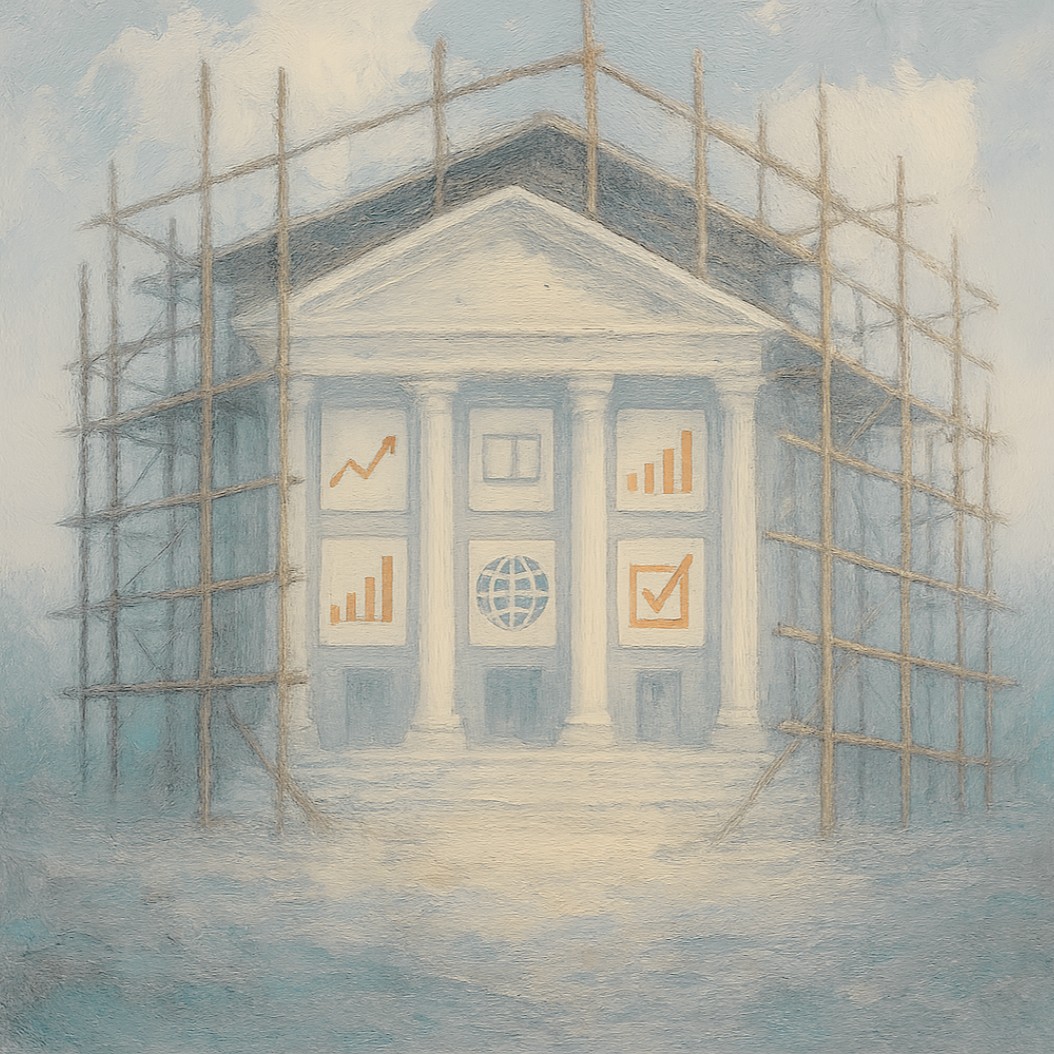School should teach kids how to navigate the future
We will not be able to live without a mobile phone, nor will we do without artificial intelligence. Yet school protects children from the tools they must learn to master.

AI-generated illustration from Sora.
Main moments
My 14 year old daughter recently got her school PC. It is closed to what is actually used in modern learning and work: ChatGPT, Youtube and other digital sources of knowledge. The rationale is often moral — that using artificial intelligence (KI) is perceived as cheating and as a shortcut that undermines learning.
Her 12-year-old little sister has already found a way around the system. On her school's Ipad, most sources of information are blocked, so she uses her phone to search up the facts she needs. She teaches in the “shadow economy” of knowledge. Not because she wants to cheat, but because she wants to learn.
The same dynamic exists among adults. A new report from KPMG shows that six out of ten employees use KI tools, many without employer approval. Adults, too, have been given their own shadow economy for KI, driven by curiosity, not unwillingness.
Perhaps we should learn from the pragmatic learning urges of both generations.
Control without competence
After the government's recommendation on mobile-free classrooms As of 2024, a large majority of Norwegian schools have introduced restrictions on mobile use. According to Education Federation almost all primary schools already have rules for this. More teachers report quieter classrooms, and international studies affirms that mobile bans can provide better social well-being and less distraction.
At the same time, research shows that learning outcomes are not improving. Newer surveys shows that while smartphone bans in schools can improve the learning environment and reduce distraction, such policies have not shown a clear improvement in academic performance. Prohibition helps with calmness and concentration, but not with learning. The real challenge is to building digital judgment Not to remove the technology.
Where we once feared the mobile, we now fear KI. The mobile revolution taught us that technology that at first seems disruptive will soon become indispensable. The same maturation needs to happen with KI -- from skepticism to wise use.
How children learn differently
Children learn differently than we did, through other media, channels and forms of interaction. Where we were trained in linear immersion, they learn in networks. Where we seek depth, they seek coherence.
Nicholas Carr described in the book “The Shallows” how the net makes thought flatter. Perhaps it is the opposite: that children's way of learning is better adapted to a world that requires parallel processing, collaboration, multidisciplinarity and digital navigation. They have a different kind of creativity, better adapted to the time in which they will live.
Although digital competence is defined as a basic skill in Norwegian schools, both OECD and Norwegian research that it is still weakly integrated into teaching. Digitalization is a priority area, but review of teacher training shows that many teachers lack systematic training in professional digital skills.
When almost all future value creation will be digital, this becomes a paradox. Norwegian students get quieter classrooms, but not necessarily better conditions for understanding and creating with technology.
The fear of cheating and loss of control
The same reflex we see now with artificial intelligence. When ChatGPT was launched, both introduced New York City and Melbourne temporary bans on the use of KI in schools — for fear that students would “outsource their thinking”.
Both bans were later revoked. School officials realized that students were using the tools anyway, and that the task was to teach them how it could be used responsibly, not to pretend it didn't exist.
A new class divide
A total ban on KI in schools reinforces social differences. Children with parents who know technology learn the tools at home. The others don't get any experience. The difference becomes a new competency gap where the ability to use AI safely becomes a matter of social background.
Behind many prohibitions is also a quiet dream of the “Larson era” — a nostalgic image of mother and child at the kitchen counter, in peace and security, with homework and help. It's a beautiful image, but also a fundamentally undemocratic ideal. Not all children receive such support at home. The school should equalize differences, not reinforce them. The future is drowning in nostalgia and growing with a will to learn.
Pandora's box is already open
There is no going back. Artificial intelligence will be as integral to the school and working life of the future as the mobile phone is in our everyday lives. The can't be banned away, just used better.
Pandora's box is open, and what comes out is both a threat and an opportunity.
Schools need to teach kids how to live with the technology, not hope that it miraculously disappears from their future.
More from Langsikt

AI threats in the short and long term
The fact that KI is causing serious problems today does not mean that we can dismiss the threats of the future.

Data centers aren't the problem -- poor prioritization is
Data centers are portrayed as a threat to Norwegian industry and the power system. The figures show that the risks lie in unclear frameworks, not in the data centres themselves.

The world's top AI scientist warns of the dangers of artificial intelligence. Dismissing him is risky.
He has outlined one of the best solution proposals so far.

Norway needs a new national project
Norway and Europe must find a third way in the shadow of China and the United States.